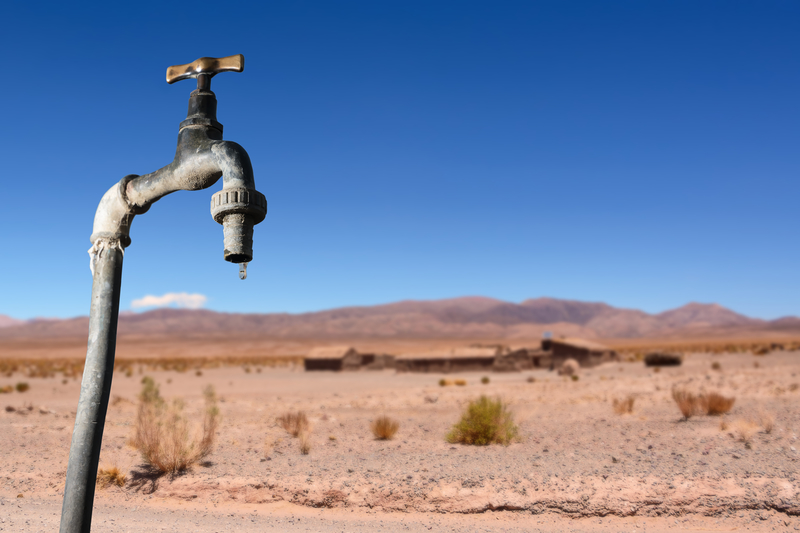What is Dry Fasting? And Is Dry Fasting Even Safe?

You likely already know what fasting is—you don’t eat for a set period of time. Dry fasting takes it a step further and prohibits any food or water intake for a specific amount of time. Essentially, your diet consists of not eating or drinking anything for a set period of time.
This is probably the simplest diet EVER. Can I eat X on this diet? No. Can I drink X on this diet? No. No matter what the question, the answer will always be a resounding NO.
In our modern society, you cannot walk down the street without seeing people eating or drinking something. Even in the grocery store or in church, you often see people toting water bottles. One would think we’re all fearful of dehydration and/or starvation the way we take snacks and beverages with us everywhere we go.
And in reality, many of us don’t drink nearly enough water, and there are serious issues with dehydration, so those ubiquitous water bottles do make sense.
Yet proponents of dry fasting suggest there may be a time and place for dry fasting. Before we go any further, please note that dry fasting does come with risks, and it is meant to be a temporary state—lasting no more than 16 to 20 hours. And if you are new to dry fasting, it is recommended that you fast for no more than 8 hours.
Dr. Sergei Filinov, a Russian physician who has been conducting dry fasts with his patients for 20 years, and has written the book Medical Fasting: Myths & Reality, always recommends undertaking several water fasts before attempting any dry fast.
That said, those who recommend dry fasting suggest a short-term lack of water may help accelerate some of the protective affects you get on a regular water fast, such as reduced inflammation and metabolic health, though at this time, there are few studies on dry fasting.
How Does Dry Fasting Differ from Traditional Fasting?
There are two types of dry fasting. One is called a soft fast, in which you may still take showers, do the dishes, and brush your teeth, etc. Then the stricter form of dry fasting is called hard dry fasting, where you do not come into contact with or have any interaction with any form of water whatsoever.
Dry fasting is not as popular as the more traditional fasting, where folks may consume water and/or black coffee and tea. Dry fasting proponents claim one day of dry fasting is the equivalent of three days of a typical fast in terms of detoxification, so you accomplish much more in a shorter time. The good thing about this is that a person does not need to take a long absence from their normal life, and because of the shorter duration, they’re potentially less likely to lose muscle mass.
There is a negative stigma attached to dry fasting, and it is often considered dangerous (more on that later). And again, the research on dry fasting is limited. However, it may be worth noting that millions of people around the world do dry fast for a month each year.
During Ramadan, the ninth month of the Islamic calendar, Muslims do a total (dry) fast in which they don’t consume water or food during daylight hours (12 hours on average), breaking their fast at sunset or dark. In some regions that are located closer to the poles, this fast can last up to 22 hours. Much of the research on dry fasting has used the intermittent fasting of Ramadan.
Other religious practices, including Christians, Hindus, Jews, Mormons, and Buddhists, also incorporate fasts into their religious observations.

Benefits of Dry Fasting
There is significantly more research on water fasting and intermittent fasting, and the research on dry fasting is scarce at this point. Many of the believed benefits of dry fasting come from Dr. Filonov’s research and his book. One of the biggest benefits of dry fasting appears to be how quickly it works. Other benefits may include:
- Brain protection and increased function
- Autophagy (more on that below)
- Improved response to inflammation
- Improved blood fat profiles (e.g., triglyceride levels, HDL, and LDL cholesterol)
- Blood sugar regulation
- Gut health (after the fast, it is important to help reestablish the microbiome)
- Flushing of toxins
Proponents suggest that when engaging in a dry fast, the body turns to the fat for energy and water. The body metabolizes hydrogen from fat cells which are released into the bloodstream and combine with the oxygen we breathe to create metabolic water. This water is claimed to be the purest form of metabolically efficient water there is, unique to each individual. And fat is the most efficient source of this metabolic water, producing up to 110 grams for every 100 grams of fat (vs. 60 from carbs and 42 from protein).
Pretty amazing stuff if you ask me—yet again, the research is rather limited at this time.
According to dry fast proponents, when you engage in a dry fast, the body essentially breaks down all of the weakest cells and uses them for fuel, thereby allowing only the strongest cells to be left through a process known as autophagy. In 2016, Professor Yoshinori Ohsumi was awarded the Nobel Prize in Physiology for the discovery of the mechanism for autophagy, one of the key ways cells in the body destroy and recycle unwanted or damaged cellular material.
In the simple terms, autophagy is the body’s way of cleaning out damaged cells to regenerate newer, healthier cells—which is believed to be what happens when the body is fasting, whether it be soft, dry, water, or intermittent.
Dry Fasting & Keto
With the recent trend in the ketogenic diet, fasting has become a popular option for anyone adhering to this particular type of meal plan. Fasting while on the ketogenic has been shown to help improve brain function and energy, because the blood-brain barrier becomes more permeable to ketones during any type of fast.
Combining the ketogenic diet with a dry fast, proponents claim, may offer the following benefits:
- Increased receptivity of the brain to ketones through a permeable blood-brain barrier.
- Greater fat burning due to the body’s creation of metabolic water from fat cells.
- An increase of ketones in the bloodstream which may mean more energy available for the brain.
Risks of Dry Fasting
Now on the flipside to all of these amazing claims: dry fasting can come with its potential hazards and risks and should only be undertaken after reviewing the research, assessing your own body and health, and with the advice of your own healthcare practitioner.
As reported by the American Cancer Society, there are many short- and long-term side effects of fasting, such as headaches, dizziness, lightheadedness, fatigue, low blood pressure, and abnormal heart rhythms. In addition, those who are fasting may also have impaired ability when it comes to operating machinery, driving a vehicle, etc.
Fasting could also cause or increase the intensity of flareups of certain conditions like gout and gallstones. Finally, fasting could impair the absorption of medications or alter drug interactions in the body.
Fasting can also be potentially dangerous in malnourished individuals. So, the health impact of dry fasting varies largely based on the individual and context.
Dry fasting also isn’t recommended for those who haven’t fasted before or who have only done juice fasts, those who suffer from headaches including migraines, people who regularly rely on stimulants like coffee or tea, people who are exercising or exerting their bodies, and those with any type of eye issues as dry fasting may make those conditions worse. Dehydration can also be made worse by hot, dry weather.
Of course, as with anything, if you are under the care of a physician for any medical or health-related issues, you should always consult with them before making any changes to your diet or exercise program. If you are taking any prescription medications, do not stop taking them, and always discuss your diet and meal plan with your physician prior to making any drastic changes to your diet such as implementing fasting, whether it be soft, dry, water, or intermittent.
While there may be benefits of dry fasting, prolonged dry fasts can be dangerous with a large risk of dehydration, and water is necessary for every cell within the body. Intermittent dry fasting (such as fasting from sunrise to sunset) may allow those interested in dry fasting the opportunity to enjoy the benefits with less risks.
If you have any additional questions, please post them in the comments below, and I will be glad to address them for you!







